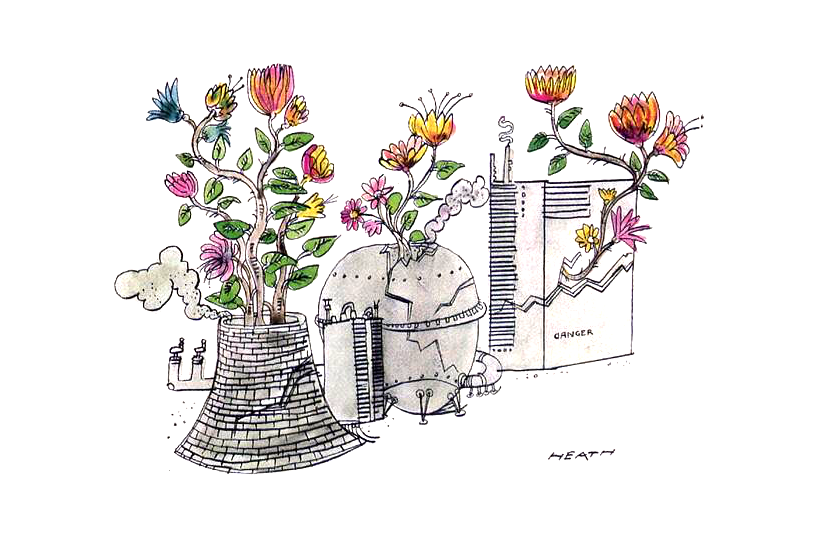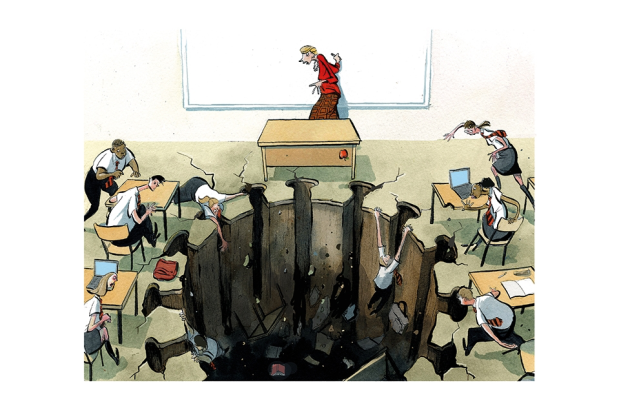When Covid struck and the quest for a vaccine began, the team at Oxford had a head start in that we were already working with the harmless common cold virus on which the AstraZeneca vaccine is based. ChAdOx — a contraction of ‘chimpanzee’, from which the virus was isolated, ‘adenovirus’ and ‘Oxford’ — is also being used to target diseases such as malaria, rabies, zika and Mers. The virus can get into our cells, but it cannot cause infection or replicate, which means it doesn’t spread through our body or from person to person. Instead, we use it to deliver what we want the body to see and respond to — which in the case of Covid-19 is the spike protein of the coronavirus.
Today, more than 33 million people in the UK have received at least a first dose of a Covid vaccine. It is an impressive achievement, faster than any other large country and faster than the response to any previous disease. Nevertheless, it is fair to ask: why can’t we go even faster?
The answer lies in the nature of bioreactors, which we rely upon to make the Covid vaccine in batches of millions of doses at a time. Chief medical officer Jonathan Van Tam recently likened the process to brewing beer, in that batches can turn out very differently. However, with vaccine bioreactors the variation between batches is much more extreme. Get the process just right, and it can yield ten or even 100 times as much vaccine as when it doesn’t work so well. The design of the process is improving all the time, and we are now amassing greater quantities of vaccine quicker than at any time in history. But in the midst of a pandemic, the demand for vaccines is almost insatiable — and the process can sometimes go wrong.
Moreover, bioreactors require specialised components which rely on a global supply chain.
Many bioreactors rely on high-quality, single use plastic vats that fit into a bioreactor controller. But there is little point having lots of bioreactor set-ups ready to go if we run out of the single-use bioreactor bags where the vaccine is actually grown. Culture media and nutrients for growing the cells that make the vaccine, filtration equipment for the downstream process and glass vials for fill-finish are just a few of the dozens of components that are needed to support vaccine manufacture. A failure in any of those supply chains leads to vaccine manufacturing stalling.
All materials that feed into manufacturing, from pieces of equipment to the solutions used and the cells themselves, must have traceable origins and be made to the highest standards. Before anything enters the manufacturing rooms, it must be identified, reviewed and quality assured. Even the air itself in the manufacturing rooms must meet high standards to ensure purity.
The potential for using ChAdOx as the basis for a Covid vaccine was realised very early on, before the disease was prevalent in Britain. And almost as soon as pre-clinical work began on developing the vaccine itself, we started work on the manufacturing process. As early as February last year we started addressing the challenge of how to get vaccine distributed globally, as is now being done through Covax, the global initiative led by Unicef which aims to distribute vaccines to some 190 countries. This early work was a financial risk, as it costs millions of pounds to get manufacturing up and running. Normally we wouldn’t start that until we knew a vaccine was safe and effective.
To manufacture the vaccine, we begin with HEK293 cells, which are derived from human embryonic kidney cells. Under the right conditions, these cells double in number every couple of days. To start the process, we set up ‘seed trains’, which begin with a single vial of cells that are grown up and expanded first in flasks, then in smaller bioreactors. Once enough cells have amassed, they are transferred to a larger bioreactor where they are infected with a small amount of vaccine seed and begin to churn out copies of the vaccine. Although the vaccine itself cannot replicate, the HEK293 cells are able to make copies of it, and we’ve developed conditions that ensure they make a lot of copies. Once the cells have done their job, they are lysed (opened) to ensure maximum vaccine release, beginning the downstream process. As the solution contains cell components and leftover nutrients as well as vaccine, it has to be purified with highly specialised filters before being put into glass vials for distribution.
One of the greatest benefits of bioreactors is that they can scale up a process like vaccine manufacturing. When we started we were working with three-litre bioreactors that could make thousands of doses at a time. By March last year we were using 50-litre bioreactors, and a month later it was 200 litres. By the end of last year we had 1,000- and 2,000-litre bioreactors up and running. Partnering with AstraZeneca on a non-profit basis in May built on our early work and allowed the scale-up in manufacturing to carry on and continue to expand globally. The largest bioreactors in use hold thousands of litres of growing cells and can produce millions of doses every few weeks.
The rapid vaccine rollout in Britain vindicates the decision to invest in the manufacturing process at a very early stage. As much as we would love to go even faster, what has been achieved was thought to be impossible just a year ago. The UK has a long record of punching above its weight in terms of scientific innovation, and UK government has said they want this country to be a global scientific leader.
By continuing the investment in scientific research, vaccine manufacturing and the supply chains that support it, we can not only end this pandemic but lead the world in responding to the next one with even greater speed.
<//>
Got something to add? Join the discussion and comment below.
Get 10 issues for just $10
Subscribe to The Spectator Australia today for the next 10 magazine issues, plus full online access, for just $10.



















Comments
Don't miss out
Join the conversation with other Spectator Australia readers. Subscribe to leave a comment.
SUBSCRIBEAlready a subscriber? Log in